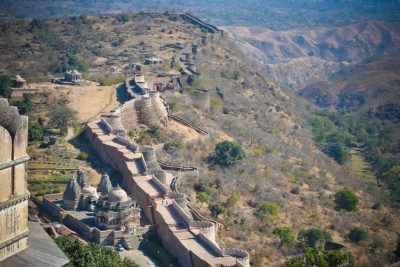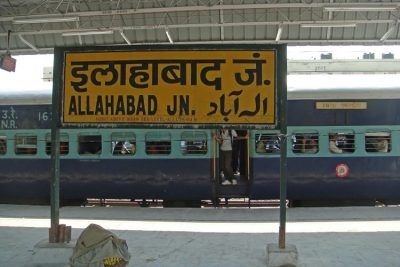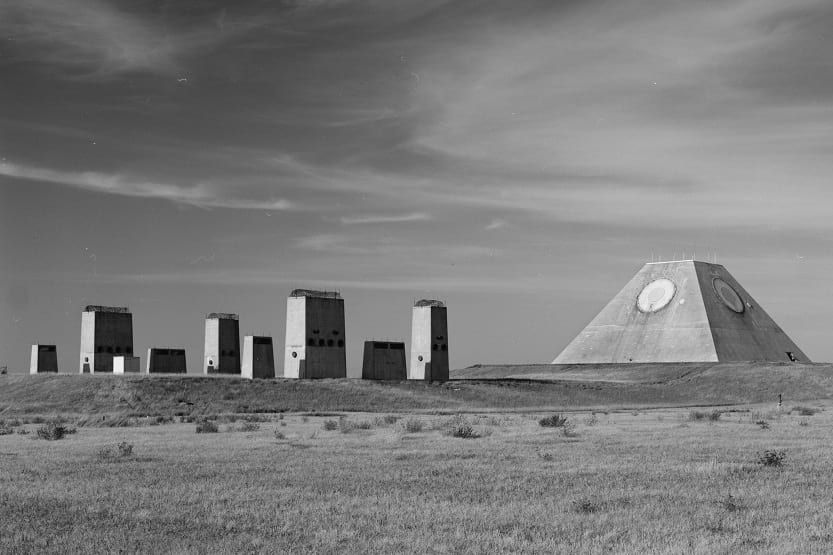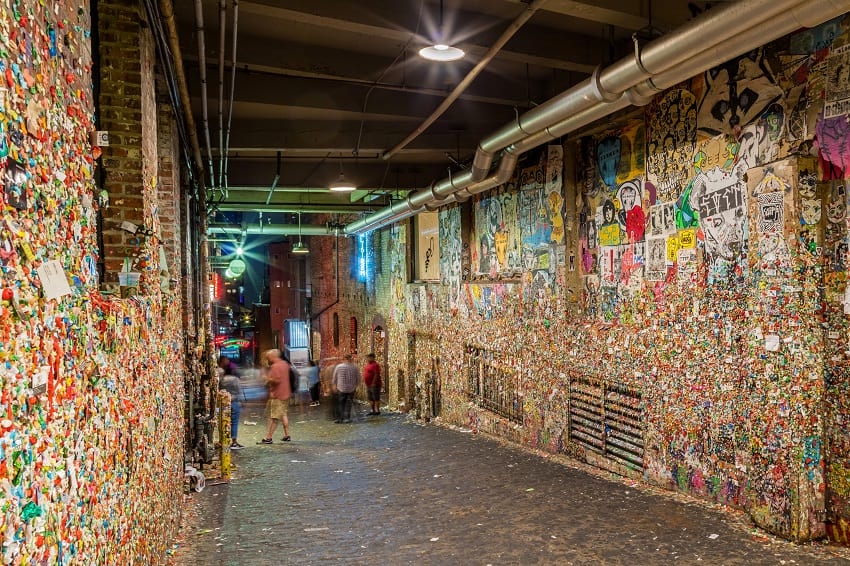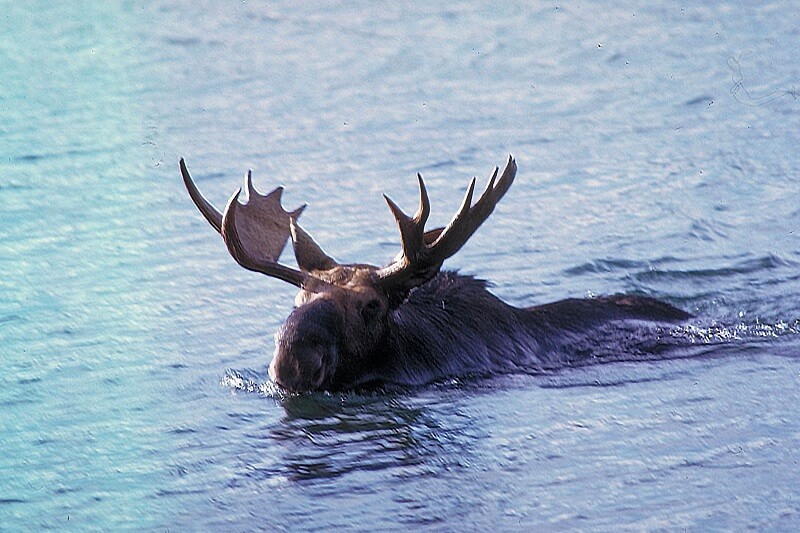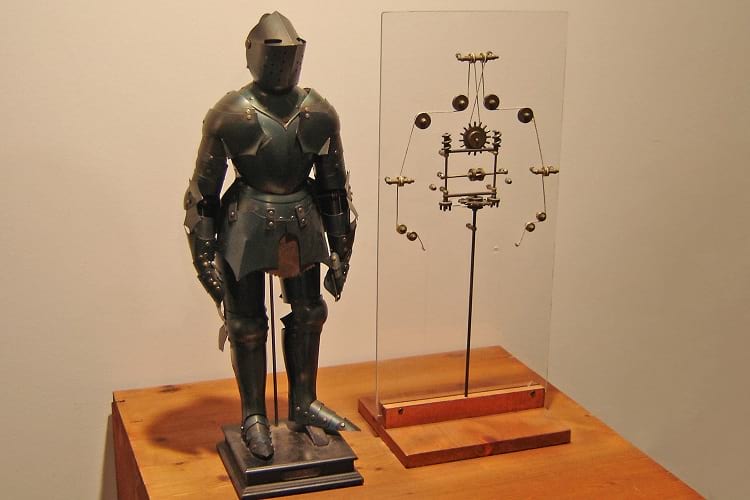Statue of Unity: India Unveils the Tallest Statue in the World
Share
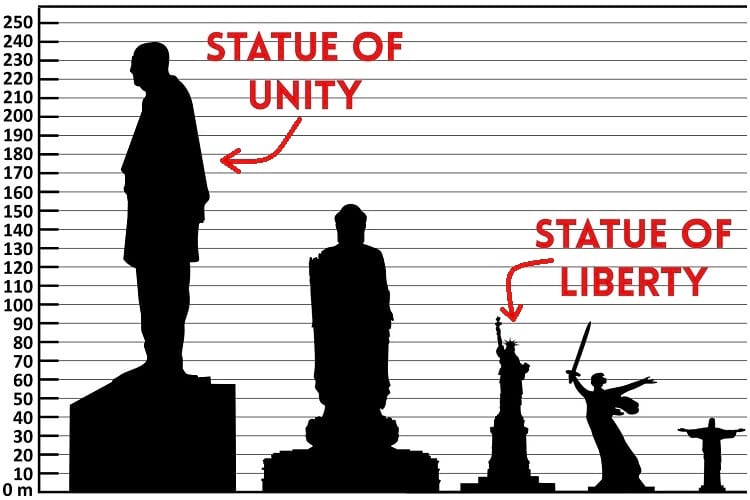
Height comparison of Statue of Unity with other notable statues. (Jdcollins13 / Wikimedia Commons)
Vallabhbhai Patel was one iconic person, who played a key role in the Indian Freedom Struggle Movement, freeing the country from the British rule. He was also the architect of modern India, who was responsible for bringing together the country as one independent sovereign state.
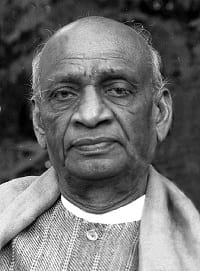
Sardar Vallabhbhai Patel, 1949. (Government of India work)
Vallabhbhai Patel is popularly known as ‘Sardar’ (Hindi for leader), for his administrative skills and leadership qualities even to this day. He was the first Home Minister of Free India and was also the Deputy Prime Minister after India attained freedom. Since he persuaded all the 562 princely states of the country to agree and integrate as a united nation; Sardar Vallabhbhai Patel came to be known as the Iron Man of India.
In honour of the founding father of the Republic Of India, a statue dedicated to him will be inaugurated by the Prime Minister of India on October 31, 2018, which also happens to be the great freedom fighter’s 143rd birth anniversary. So, just when India is about to unveil the tallest manmade structure in the world – the Statue of Unity – here’s a sneak peek into the monument that is all set to make the world go green with envy.

The Statue of Unity early this year. (Vijayakumarblathur / Wikimedia Commons)
Specifications of the Statue of Unity
At a height of 182 metres, the Statue of Unity will now be the tallest statue in the world, replacing the ‘Spring Temple Buddha’ statue in China, which is approximately 153 metres tall. The Statue of Unity is double the height of one of the world’s most popular statues – USA’s Statue of Liberty (93m) – and will be taller than some of the highest statues in the world, including Japan’s ‘Ushiku Daibutsu’ (120m), Russia’s ‘The Motherland Calls’ (85m) and Brazil’s ‘Christ The Redeemer’ (38m). The monument is built in such a way that it can withstand high-velocity winds, as high as 60 m/sec and also hold out during major earthquakes, as powerful as 6.5 on the Richter Scale.
A three-month-long nationwide campaign called ‘Loha’ was initiated in 2013, where Indian farmers and villagers were urged to donate their work-out iron tools and implements and scrap metals, which were to be used in building the tall iron structure. Eventually, as much as 6,500 metric tonnes of structural steel, 18,500 metric tonnes of reinforcement steel and 1,700 tonnes of bronze, along with 210,000 cubic metres of concrete were used to build the Statue of Unity. To overcome rusting issues during monsoons, the statue is clad with bronze panels and comprises of two semi-joined concrete cylindrical cores, which are surrounded by steel bars.
Key Features of the Statue of Unity
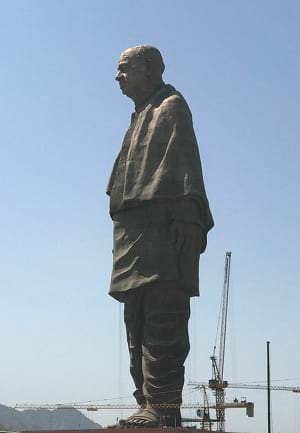
The nearly completed statue on unity. (Rahul 71144 / Wikimedia Commons)
In the year 2010, the current Prime Minister of India Narendra Modi, who was the Chief Minister of the state of Gujarat then, launched a special purpose vehicle called Sardar Vallabhbhai Patel Rashtriya Ekta Trust, which was to undertake the construction work of the statue. In 2013 he laid the foundation stone of the project. Engineering and construction company Larsen & Toubro took up the designing, construction and maintenance initiatives of the statue, which was set to be completed by October 2018. Built on an island called Sadhu Bet or Sadhu Hill near the Rajpipla city of Gujarat, the statue is precisely located in the Kevadiya Village, facing the Sardar Sarovar Dam.
A 3.5 kilometer-long highway is built to link the Statue of Unity to Kevadiya Village, which will be open to visitors after the statue is unveiled. A 5-km long boat ride will ferry visitors to and fro from the monument in the days to come. Occupying around 20,000 square metres of land, the Statue of Unity is surrounded by a 12 square kilometer artificial lake. The tallest statue in the world overlooks the Narmada Dam and the viewing gallery or observation deck, built at 500 feet high above the sea bed (approximately near the statue’s chest area), will allow tourists to soak in the panoramic beauty of the neighbouring Vindhyachal and Satpura mountain ranges. It will also allow viewing the 212 km-long reservoir of the Sardar Sarovar Dam.
The free-standing structure, which has a total height of 240 metres, including the star-shaped 58-metre base, accurately depicts Sardar Patel wearing his trademark dhoti, kurta and a shawl over his shoulders. Once open to visitors, the statue will start its services for its patrons, thus bringing a boost in tourism. A plaza for shops, food stalls, retail outlets, souvenir shops and other amenities will start functioning for public a little after the unveiling ceremony. Two high-speed elevators will help in quick and easy public transit. The statue would be able to accommodate approximately 15, 000 tourists in a day and the observation deck could have room enough for 200 visitors at once, without overcrowding.
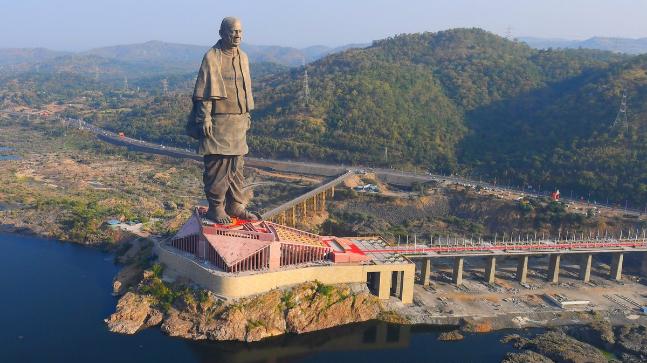
Birdseye view of the statue. (Abhinay6597 / Wikimedia Commons)
The three-tiered base of the statue (up to the shin) will have a large museum depicting the life and times of Sardar Vallabhbhai Patel and the contributions made by the Iron Man of India towards the nation. A mezzanine will form its second base, while a memorial garden on the roof will serve as a visitors’ centre. The statue will have a 3-star hotel, conference centre, research hub and an administrative complex in the premises. The second zone will cover the statue’s thighs and Zone three will house the observation deck. Zone four and five, up to the shoulders and head of the statue respectively, will be out of public reach, and it will function as the maintenance area. The lobby area at the base will also have an audio-visual gallery, complete with depictions of tribal Gujarati culture.
Public reaction and criticism
Designed by renowned Noida-based sculptor Ram Vanji Sutar, the idea of constructing an expensive structure in an artificial lake, initially received a lot of flak from the public and mixed reviews from the world media. The tribals residing in the nearby area said that the project robbed them of their land and the expenditure at which the statue is being built could have been otherwise used for raising the standards of living of the tribal people. Constructed within 42 months at a cost of approximately INR 2,989 crores, farmers and locals were also of the opinion that the extravagant budget of the statue could have been cut down and used towards improving the agricultural land.
Many foreign media outlets had mixed reactions while the Statue of Unity was under construction. Washington Post reported that the statue, weighing 67,000 tonnes, would showcase India’s growing prosperity and rising status as a global power; while other media houses stated that apart from serving as the ruling Indian political party’s fitting homage to the statesman, the Statue of Unity would serve no other purpose.
Whether the towering statue will elevate India’s status in the world economy or not, it will be left for us to see if the tallest structure in the world, aptly named Statue of Unity, would be able to do any justice to its name.
Enjoyed this article? Also, check out “The Seven Wonders of the Ancient World and the History Behind It“.
Fact Analysis:
STSTW Media strives to deliver accurate information through careful research. However, things can go wrong. If you find the above article inaccurate or biased, please let us know at [email protected]

